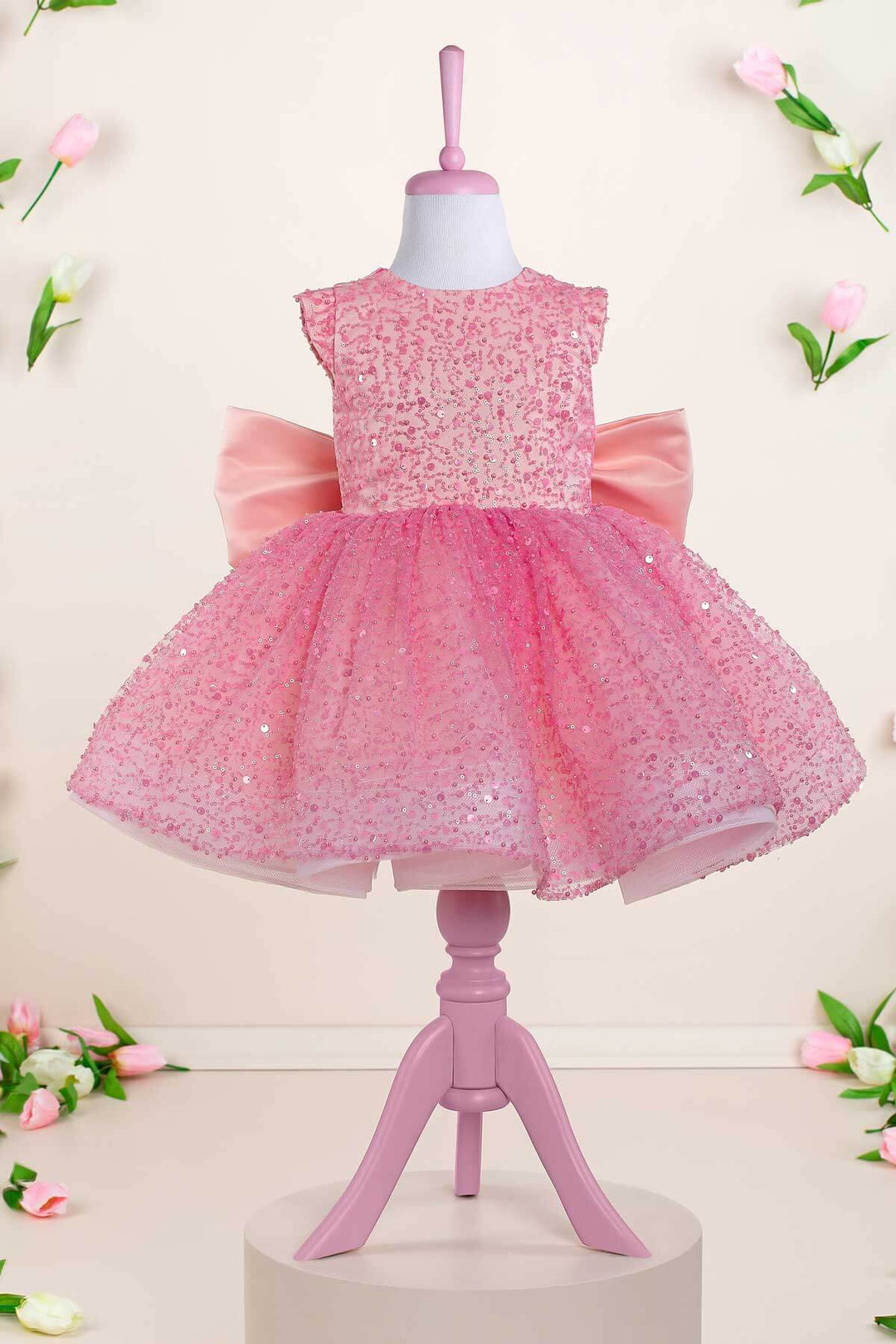Christening Ceremony Guide: Traditions & Etiquette
A christening ceremony is a cherished tradition celebrated by families around the world. Whether you're a parent planning your baby girl's special day and looking for a baptism dress for baby girl or a guest attending such an event, understanding the traditions and proper etiquette is essential. A comprehensive guide to the christening ceremony will provide you with valuable insights and helpful tips to ensure a meaningful and memorable occasion. From the historical significance to the step-by-step planning process, this guide will navigate you through the traditions and etiquette surrounding this special event. So, if you're ready to embark on this spiritual journey, let's explore the enchanting world of christening ceremonies together.
The Historical Significance of Christening Ceremonies
Christening ceremonies have a profound historical significance that spans across cultures and religions. Dating back centuries, these ceremonies have played a central role in welcoming newborns into their respective communities.
The origins of christening ceremonies can be traced to ancient times, where they were often associated with purification rituals and the bestowing of blessings upon infants. In Christianity, christenings hold a special place as a sacrament, symbolizing the child's initiation into the faith and the beginning of their spiritual journey.
Throughout history, christening ceremonies have evolved to incorporate cultural and religious traditions, making them a unique and personal experience for each family. In some cultures, such as Greek Orthodox and Catholic, christenings may include elaborate rituals and traditions that have been passed down through generations.
Another historical significance of christening ceremonies lies in the naming of the child. In many cultures, the christening ceremony is the moment when the child is officially given their name. This act carries great importance, as the name chosen often reflects the family's heritage, values, or religious beliefs.
Today, christening ceremonies continue to hold immense value and are cherished by families around the world. They serve as a celebration of new life, a declaration of faith, and a bond between the child, their loved ones, and their community.
Understanding Christening: Definitions and Key Terms

Christening is a significant religious ceremony that marks the entry of a child into the Christian faith. To fully comprehend the significance of this ritual, it is important to understand key terms associated with christening, such as baptism, dedication, and the symbols that hold special meaning in these ceremonies.
The Meaning of Christening
Christening, also known as infant baptism, is a sacred ceremony in which a child is initiated into the Christian faith through the sacrament of baptism. During this ritual, water is used to symbolize the cleansing and spiritual rebirth of the child, signifying their lifelong commitment to the teachings of Christianity.
Difference Between Christening, Baptism, and Dedication
While christening and baptism are often used interchangeably, there are subtle differences between the two. Christening specifically refers to the religious naming ceremony where the child is baptized, while baptism focuses on the act of immersion or sprinkling with water as a symbol of purification and initiation into the church. On the other hand, dedication is a non-sacramental ritual that involves the blessing and consecration of a child to God without the use of water.
Important Symbols in Christening Ceremonies
Several symbols hold significant meaning in christening ceremonies. The most common symbol is water, symbolizing purification and spiritual rebirth. The sign of the cross is another important symbol, representing the embracing of Jesus Christ and the Christian faith. Additionally, the white baptismal gown is a symbol of purity and new beginnings, while the baptismal font or basin serves as a vessel for the sacred water used in the ceremony. The presence of lit candles symbolizes the light of Christ and the guidance of the Holy Spirit.
By understanding these key terms and symbols, one can gain a deeper appreciation for the profound significance of christening ceremonies in the Christian faith, further enhancing the experience for both the child and their loved ones.
Planning the Christening Ceremony: A Step-by-Step Guide

Planning a christening ceremony involves careful consideration and attention to detail. By following this step-by-step guide, you can ensure that the event is a memorable and meaningful occasion for your child and loved ones.
Selecting a Date and Venue
The first step in planning a christening ceremony is to choose a suitable date and venue. Consider the availability of your desired church or religious venue, as well as the preferences of your family and friends. It is advisable to select a date that allows ample time for preparations and ensures the attendance of important guests.
Choosing a Clergy or Officiant
Next, determine who will officiate the ceremony. Depending on your religious beliefs and traditions, you may need to consult with your local church or religious institution to select a clergy member or officiant. It is important to establish a rapport and discuss the details of the ceremony to ensure a seamless experience.
Inviting Guests
Send out invitations to your family, close friends, and other loved ones to inform them about the christening ceremony. Include the date, time, venue, and any other relevant details. Consider using physical invitations or digital platforms to reach your desired audience effectively.
Organizing the Ceremony and Reception
Plan the order of events for the ceremony, including any special readings, speeches, or rituals. Coordinate with the clergy or officiant to ensure all necessary arrangements are in place. If you intend to have a reception after the ceremony, make arrangements for the venue, catering, and decorations. Consider hiring a professional photographer to capture the special moments of the day.
Coordinating with the Church or Venue
If you are hosting the christening ceremony in a church or religious venue, communicate with the staff to understand their requirements and guidelines. Discuss any special requests or arrangements, such as dressing rooms, seating arrangements, and specific traditions or rituals that need to be followed during the ceremony.
By following these step-by-step guidelines, you can plan a christening ceremony that celebrates the spiritual significance of the occasion while ensuring a smooth and memorable event for you, your child, and your guests.
How to Choose Godparents: Roles and Responsibilities

Choosing godparents for a christening ceremony is an important decision that holds great significance. Godparents play essential roles in the child's spiritual upbringing and serve as trusted guides throughout their lives. It is crucial to consider various factors when selecting suitable godparents, ensuring they can fulfill their roles and responsibilities effectively.
- Religious Beliefs: When choosing godparents, it is vital to consider individuals who share similar religious beliefs with the child's family. This ensures that the godparents can actively support the child's spiritual development and nurture their faith.
- Character and Values: Selecting godparents with strong character traits, such as kindness, compassion, and moral integrity, is crucial. Godparents should serve as positive role models for the child, guiding them in making wise decisions and upholding values that align with the family's beliefs.
- Relationship with the Child: The bond between the child and their godparents should be deep and meaningful. Choosing godparents who have a close relationship with the child or have a strong desire to develop a close relationship ensures a lifelong connection and support system for the child.
- Relationship with the Parents: It is essential to consider the relationship between the potential godparents and the child's parents. Godparents should be individuals who can work harmoniously with the parents, supporting them in their parenting journey and providing guidance and assistance when needed.
When choosing godparents, it is helpful to spend time reflecting on potential candidates who meet these criteria. Engaging in open and honest conversations with the prospective godparents about their willingness to take on the responsibilities associated with the role is also crucial.
Remember, choosing godparents is a significant decision, so take the time to carefully consider your options. By selecting godparents who are committed to their duties and share a strong bond with the child, you can ensure that they will play an integral role in their spiritual growth and development.
Decor and Ambiance: Setting the Scene for a Christening
Creating an enchanting atmosphere is essential when planning a christening ceremony. The right decor and ambiance can help set the scene and make the event even more memorable for everyone involved. Here are some ideas to inspire you:
- Floral Arrangements: Incorporate beautiful flowers that symbolize purity and new beginnings. Consider using delicate white roses, lilies, or baby's breath as centerpieces or to adorn the venue.
- Banners and Signage: Hang personalized banners or signs with the child's name or meaningful messages to add a personal touch to the decor. It can also serve as a lovely keepsake for the family.
- Candlelight: Create an intimate and serene ambiance by using candles. Place them strategically around the venue to provide a soft, warm glow during the ceremony. Consider using candles with religious symbols or the child's initials.
- Themed Decorations: Choose a theme that resonates with the significance of the christening. It could be religious-inspired, such as angels or doves, or a more general theme like "Heavenly Blessings" or "Little Blessing." Incorporate elements such as banners, table settings, or hanging decorations that match the chosen theme.
- Colors and Fabrics: Opt for soft and muted colors, such as whites, creams, or pastels, to create a calming and peaceful ambiance. Use fabrics like lace or chiffon to add elegance and delicacy to the decor.
Remember, the decor should complement the solemnity of the occasion while expressing joy and celebration. Find inspiration from your faith or personal preferences to create an atmosphere that reflects the spiritual and joyful aspects of a christening.
Christening Gifts: Ideas and Etiquette
When attending a christening ceremony, it is customary to bring a thoughtful and meaningful gift for the child. Selecting the perfect gift can be a daunting task, but with a little guidance, you can make a lasting impression. Here are some ideas and etiquette tips to help you choose the right christening gift:
1. Typical Gifts for the Christened Child
Traditional christening gifts often have religious significance and can include items such as a cross necklace, a Bible, or a personalized prayer book. These timeless presents symbolize the child's spiritual journey and serve as cherished keepsakes. Other popular choices include silver baby cups, engraved picture frames, or a special piece of jewelry that can be worn on significant occasions.
2. Gift-Giving Etiquette for Guests
When selecting a gift, it is important to consider the child's religious background and the preferences of the parents. If in doubt, reach out to the parents or a close family member to inquire about their preferences. It is also thoughtful to consider the child's future growth and development, choosing a gift that can be enjoyed and appreciated as they grow older. When presenting the gift, a heartfelt card with a personalized message expressing your blessings and well wishes adds a personal touch to the gift.
3. Personalized and Keepsake Gift Suggestions
For a truly special and memorable gift, consider personalized and keepsake items. These can include monogrammed blankets, engraved jewelry or silverware, or a custom-made piece of artwork. These personalized gifts demonstrate your thoughtfulness and create a lasting memento of the child's christening day. Additionally, you may choose to create a gift hamper filled with meaningful items such as a baby book, a plush toy, or a hand-knitted blanket, combining practicality and sentiment in one.
Remember, the most important aspect of a christening gift is the sentiment behind it. Whether you choose a traditional religious gift or something more personalized, the thought and care you put into selecting a gift will be appreciated by the child's family. By honoring the significance of the occasion with a meaningful gift, you will contribute to the joy and celebration of the christening ceremony.






